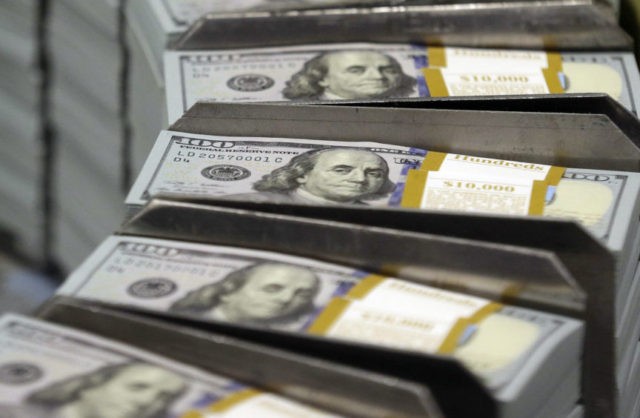Tether, a controversial digital asset, may threaten the health of the entire cryptocurrency market. But what is it?
Tether (USDT) is a digital currency created by executives from the cryptocurrency exchange Bitfinex which claims to peg its value to that of the U.S. dollar; Tether brands itself a “stable-coin” without the same price volatility as Bitcoin and other digital assets. Tether was created so that cryptocurrency traders could trade against a stand-in for the U.S. dollar on exchanges that weren’t legally permitted to allow users to trade against real-world fiat currencies.
Each USDT would retain a value equivalent to one U.S. dollar through a reserve system that ensured that for each USDT created, there would be one U.S. dollar in a reserve account.
When Tether was first proposed, the team behind the project promised that regular audits would provide traders with confidence. This is what the team wrote in the project’s white paper with regards to transparency:
In order to maintain accountability and to ensure stability in exchange price, we propose a method to maintain a one-to-one reserve ratio between a cryptocurrency token, called tethers, and its associated realworld asset, fiat currency. This method uses the Bitcoin blockchain, Proof of Reserves, and other audit methods to prove that issued tokens are fully backed and reserved at all times.
However, Bitfinex and Tether haven’t exactly held firm to their promise of transparency. On Saturday, Tether confirmed that their relationship with their auditor, Friedman LLP, had dissolved. Tether cited an unusual concern for the end of their relationship with Friedman. In a statement, they wrote that they were concerned that the auditing firm was being too thorough.
We confirm that the relationship with Friedman is dissolved. Given the excruciatingly detailed procedures Friedman was undertaking for the relatively simple balance sheet of Tether, it became clear that an audit would be unattainable in a reasonable time frame. As Tether is the first company in the space to undergo this process and pursue this level of transparency, there is no precedent set to guide the process nor any benchmark against which to measure its success.
In a partial audit conducted by Friedman in September 2017, Tether was found to have $442.9 million in reserve accounts. At the time, that amount was equivalent to the amount of USDT that had been issued. Since September, the total amount of all USDT issued has risen to over $2 billion. Analysts in the crypto space have sounded the alarms over the dramatic increase in the amount of USDT over such a short period of time. Some have speculated that there are more USDT in circulation than there are USD in Tether’s reserve accounts.
In November, Tether published a statement claiming that approximately $30 million worth of USDT was stolen by an “external hacker.”
“$30,950,010 USDT was removed from the Tether Treasury wallet on November 19, 2017 and sent to an unauthorized bitcoin address,” the statement read. “As Tether is the issuer of the USDT managed asset, we will not redeem any of the stolen tokens, and we are in the process of attempting token recovery to prevent them from entering the broader ecosystem.”
On Tuesday, Bloomberg reported that the U.S. Commodity Futures Trading Commission issued a subpoena to Tether and Bitfinex. Nathaniel Popper of the New York Times confirmed the report but clarified that the subpoena was issued on December 6.
Twitter user “Bitfinexed” pointed out that an additional $1.462 billion worth of Tethers were issued in the days following receipt of the subpoena on December 6. “I wonder if they will be bold enough to print more money,” the user wrote.
The price movement in December could have been the last final pump. They printed 1.462 Billion dollars worth of Tethers during the final period.
I wonder if they'll be bold enough to print even more money. pic.twitter.com/0Vlav39n0V
— Bitfinex'ed (@Bitfinexed) January 30, 2018
On Wednesday, one day after news of the subpoena became public, Tether destroyed $30 million worth of tokens.
A Tether first. Tokens destroyed.
Let's get all of them destroyed. pic.twitter.com/f5m2WLqA8M
— Bitfinex'ed (@Bitfinexed) January 31, 2018
Bitcoin’s price fell sharply as a result of the news of the subpoena, touching below $10,000 per coin. Some analysts predict that a collapse in Tether could lead to a collapse in the entire cryptocurrency market.
Indeed Tether/USDT used to manipulate Bitcoin prices. Without this scam Bitcoin price would collapse by 80%. Regulators asleep at the wheel while $2 billion of fake $ created via this scam, half of it since December. Not even North Korea created so many fake $ backed by nothing https://t.co/HfIWsU4we8
— Nouriel Roubini (@Nouriel) January 25, 2018
Others suggest that a mass sell-off of USDT would lead to an increase in the price of Bitcoin. As there is no method of liquidating USDT for USD, they argue, USDT holders would be forced to trade their holdings for other cryptocurrencies.
I don’t understand why Bitcoin is tanking right now. If you hold any of the $2bn in Tether, wouldn’t you be dumping Tether and buying BTC/BCH/ETH instead? Any theories?
— Vinny Lingham (@VinnyLingham) January 30, 2018
In a statement to Bloomberg, Bitfinex and Tether refused to comment on the subpoena. “We routinely receive legal process from law enforcement agents and regulators conducting investigations,” Bitfinex and Tether said Tuesday. “It is our policy not to comment on any such requests.”
The subpoena comes during a rough week for the cryptocurrency space. Just last week, over $500 million worth of NEM coins were stolen from a Japanese exchange.

COMMENTS
Please let us know if you're having issues with commenting.